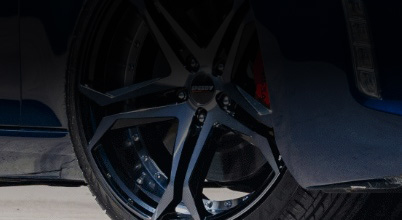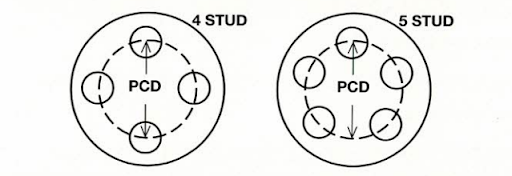
How to Measure PCD
PCD is short for 'pitch circle diameter'.
This is the label given to the particular circular bolt pattern used to hold the wheels onto your vehicle.
The most common PCDs you'll find on passenger vehicles on the street will consist of 4, 5 or 6 studs, arranged evenly in a circular pattern.
There are a few vehicles with 3 studs such as Smart cars, and now that we're seeing some of the larger US pickup trucks making their way to Australia, 8 stud vehicles are making an appearance.

A very common PCD found on many vehicles is '5x114.3' which means there are 5 studs arranged equally on a circle that is 114.3mm in diameter.
How do I find my PCD?
If you don't know the PCD of your vehicle, it's easy to find out. Much of the time, the information will be either stamped onto your factory wheel, written in your owner's manual, or found online by searching your year, make and model along with the term 'PCD'.
Measuring your own PCD is also simple and easy to do.
- Simply count how many bolts or nuts hold your wheel on. If you have plastic wheel covers, you may need to remove them, as the plastic covers sometimes have fake nuts moulded in. This will give you your first number.
- For EVEN numbers of studs, simply measure centre-to-centre across any two nuts opposite each other. It's really that easy. If you have 4 studs and the opposite studs are 100mm apart, you have a vehicle with 4x100 PCD.
- For ODD numbers of studs, it's a bit trickier and you'll need to do some maths. Just measure the centre-to-centre distance of two adjacent studs and then multiple the result you get by the following figures:
For 3 stud PCDs - Multiply your measurement by 1.154 to get your PCD figure
For 5 stud PCDs - Multiply your measurement by 1.7021 to get your PCD diameter.

